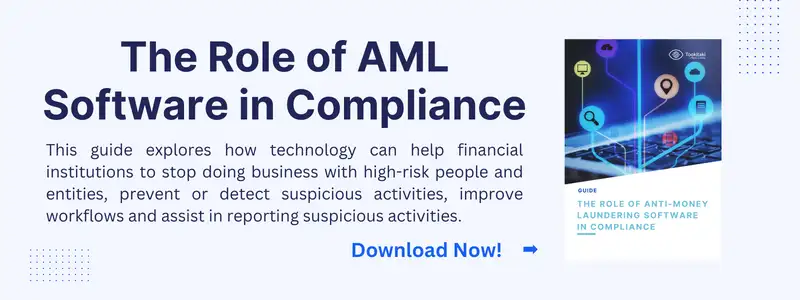Introduction
Deepfakes, a blend of "deep learning" and "fake," have emerged as a concerning and influential aspect of digital technology. Using artificial intelligence (AI) algorithms, deepfakes manipulate or replace existing visual and audio content with highly realistic, but fabricated, elements.
The rise of deepfake technology underscores the importance of stringent identity verification and name screening practices. In this article, we will delve into the world of deepfakes, understand the technology behind them, explore notable examples, and discuss the implications they pose to individuals, society, and cybersecurity. Furthermore, we will provide insights into protecting yourself from the potential risks associated with deepfake technology.
Key Takeaways
- Deepfakes utilize AI algorithms to manipulate or replace existing visual and audio content with fabricated elements.
- Deepfake software, apps, maker tools, and online platforms facilitate the creation of deepfakes.
- Notable examples of deepfakes range from entertainment purposes to the spread of misinformation.
- Deepfakes pose challenges in the realms of misinformation, identity theft, political manipulation, and privacy.
- Protecting oneself from deepfakes requires media literacy, source verification, and robust cybersecurity measures.
Understanding Deepfakes: Unveiling the Technology
Deepfakes utilize sophisticated machine learning algorithms, such as generative adversarial networks (GANs), to analyze and synthesize existing visual and audio data. These algorithms enable the creation of highly realistic, yet entirely fabricated, media content that can convincingly mimic the appearance and voice of individuals.
How Deepfakes are Created: Exploring the Process
- Deepfake Software and Apps: Various software and apps, both free and commercial, are available that leverage AI algorithms to create deepfakes. These tools provide users with the ability to manipulate and replace faces or voices in videos with precision.
- Deepfake Maker Tools: Deepfake maker tools allow individuals with minimal technical knowledge to generate deepfakes. These tools often come with user-friendly interfaces and simplified workflows to facilitate the creation process.
- Deepfake Online Platforms: Online platforms offer users the convenience of creating deepfakes without the need for local installations. These platforms usually provide cloud-based deepfake generation services, accessible through web browsers.
- Deepfake GitHub Repositories: GitHub, a popular code-hosting platform, hosts various open-source projects related to deepfake technology. These repositories include source code, pre-trained models, and other resources that developers and researchers can utilize.
Notable Deepfake Examples: From Entertainment to Misinformation
Deepfakes have gained attention in various domains, including entertainment and politics. Notable examples include deepfake videos altering the faces of actors in movies or inserting celebrities into scenes they never participated in. However, deepfakes have also been used to spread misinformation, create fake news, or generate explicit content without consent, raising significant concerns.
The Implications of Deepfakes: Challenges and Concerns
- Misinformation and Fake News: Deepfakes pose a significant threat to the credibility of information and can be used to manipulate public opinion, spread false narratives, or discredit individuals.
- Identity Theft and Fraud: The ability to convincingly impersonate someone using deepfake technology raises concerns about identity theft and fraud. Deepfakes could be used to deceive individuals, commit financial crimes, or gain unauthorized access to personal accounts.
- Political Manipulation and Disinformation Campaigns: Deepfakes can be weaponized to manipulate elections, create false statements attributed to political figures, or fabricate compromising videos or audio recordings.
- Privacy and Consent: Deepfakes raise serious privacy concerns, as individuals' faces and voices can be manipulated without their knowledge or consent. This technology challenges the notion of trust in visual and audio media.
Protecting Yourself from Deepfakes: Practical Strategies
- Media Literacy and Awareness: Developing media literacy skills is essential to identify potential deepfakes and recognize manipulated content. Educating oneself about deepfake technology, its capabilities, and its limitations is crucial in combating misinformation.
- Verifying Sources and Content: Verify the authenticity and reliability of sources before sharing or believing information. Cross-reference multiple sources and fact-check information using reputable news outlets or fact-checking organizations.
- Implementing Robust Cybersecurity Measures: Strengthen your cybersecurity defenses by using up-to-date antivirus software, applying security patches, and regularly updating your devices. Be cautious when downloading files or clicking on suspicious links to avoid malware that may facilitate deepfake attacks.
Anti-Financial Crime Compliance with Tookitaki?





